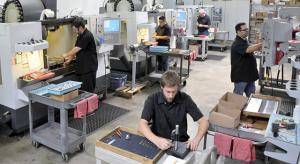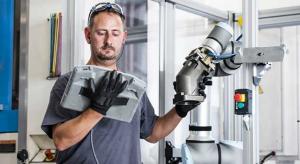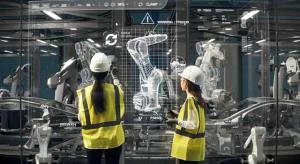All Features

Gleb Tsipursky
The future of work—of hybrid and fully remote workers—will require upskilling of employees for organizations that wish to succeed in the post-Covid world. Leaders who want to seize a competitive advantage in that future will need to benchmark their training initiatives for best practices on…

Knowledge at Wharton
Negotiating a salary increase or a job promotion ranks high on the list of hard conversations to have at work, and it doesn’t get any easier without a plan.
“People think, ‘I’m just going to knock on their door, sit down with them, and noodle around and see where this goes.’ That’s not a plan,”…

Ben Bensaou
Not every CEO can be the next Steve Jobs, constantly conjuring up game-changing new ideas and revolutionary products. But what all CEOs and senior leaders can be are champions for innovation within their own organizations. They are the ones who can help give their employees the freedom and space to…

The Un-Comfort Zone With Robert Wilson
Recently I was interviewed by Rocky Buckley, a strategic business coach and creator of the Power Persona Project. We discussed an aspect of success that I wish I could give to everyone: the concept of a positive temperament or mental state. So I decided to share the conversation.
Rocky: Is success…

Theodoros Evgeniou, Ludo Van der Heyden
Technology has always been a double-edged sword. While it’s been a major force for progress, it has also been abused and caused harm. From water power to Fordism, history shows that technology is neither good nor bad by itself. It can, of course, be both, depending on how it’s used.…

Bruce Hamilton
The level of excitement was high in our machine shop as we drew closer to our goal of less than 9-minute changeovers on the BNC lathe. (See Part One of this story for how we got there.) Setup improvements had so far reduced changeover time to 20 minutes, cutting the economic order quantity from…

Gleb Tsipursky
The pandemic has forced organizations to recognize that they need to address proximity bias to adapt their work culture to the hybrid and remote future of work. Proximity bias is the unconscious perception that those with close proximity to their team or leader are better employees. These employees…

Bruce Hamilton
We had been working with the Toyota Production System Support Center (TSSC) for two years to build a model line in our assembly department. As we moved from small batch production to one-by-one, the results had been astounding: Customer lead time reduced from two weeks to one day, crew size cut in…

Gleb Tsipursky
The pandemic forced leaders to reconcile with the need for effective hybrid and remote team management strategies, including in performance evaluations. Research has shown the benefits of moving away from large-scale quarterly or annual performance reviews.
Instead, systematic, frequent, and brief…

The Un-Comfort Zone With Robert Wilson
When I was a kid, I was enamored of cigarette-smoking movie stars. When I was a teenager, some of my friends began to smoke; I wanted to smoke too, but my parents forbade it. I was also intimidated by the ubiquitous anti-smoking commercials I saw on television warning me that smoking causes cancer…

Roderick Swaab, Robert Lount, Seunghoo Chung, Jeanne Brett
The higher the stakes, the more likely a negotiation is conducted by two teams rather than two individuals. Just think about corporate mergers and acquisitions, lawmaking in government, or international trade agreements. All these types of negotiations require varied expertise with multiple people…

Gleb Tsipursky
‘I don’t see how we can replace the serendipitous idea generation of hallway conversations,” said Saul, the director of quality management for a 1,500-employee enterprise software company, during a planning meeting about the company’s post-vaccine return to the office. “If we don’t return to the…

Knowledge at Wharton
Most managers dread giving feedback. Offering a blend of praise and criticism is supposed to help your team members do more of what they’re good at and improve in areas where they’ve missed the mark. But research shows it rarely works that way. In her book How to Change (Ebury Digital, 2021),…

Sachin Waikar
‘Diversity means lots of things,” says Amir Goldberg, an associate professor of organizational behavior at Stanford Graduate School of Business. “These days, it evokes the idea of race or gender, but it’s also about how people think.”
Beyond their demographic differences, people working in a group…

Ben Bensaou
For many organizations, the biggest challenge of innovation isn’t coming up with good ideas—it’s making sure those good ideas are noticed and acted upon. This is a particular challenge for multinationals, such as global pharmaceutical and health company Bayer, which have thousands of staff spread…

Daniel de Wolff
Most successful entrepreneurs know that simply inventing a smart or disruptive technology isn’t enough to make customers come running. Among other things, business development involves connecting with the right people in the corporate hierarchy. Yet aspiring entrepreneurs often underestimate the…

Rebecca Saenz
There are three key things cobot developers and employers using cobots must remember when considering implementation: 1) human life takes precedence, 2) human life takes precedence, and 3) human life takes precedence.
Dictionary.com defines cobot as “a computer-controlled robotic apparatus that…

Katie Rapp
For manufacturers, artificial intelligence (AI) can be a game changer. Greater efficiencies, lower costs, improved quality, and reduced downtime are just some of the potential benefits. This technology isn’t just for large manufacturers. High-value, cost-effective AI solutions are more accessible…

Ben Bensaou
A manufacturer of the fabric used to reinforce car tires might not seem an obvious source of innovation inspiration. But in just a few years, Kordsa, a part of the Turkish industrial conglomerate Sabancı Group, transformed itself from a price-driven maker of commodity products into a provider of…

Gleb Tsipursky
Are you worried that having hybrid and, especially, full-time remote employees will undermine employee on-the-job learning, integration into company culture, and intra- and inter-team collaboration? This issue recurrently came up with organizations that I guided in developing strategies for…

Arron Angle
I just received and read the “2021 ASQE Insights on Excellence Executive Brief.” The brief examines how quality initiatives are progressing in the digital era, based on the views and experiences of 542 executives and quality professionals from global enterprises. Here we go again, I thought.
Yes,…

Gleb Tsipursky
Organizations will need to pivot their corporate culture if they wish to survive and thrive in the world of virtual collaboration after the pandemic. The most important changes will stem from the wide-scale and permanent shift to hybrid and fully remote modes of working.
Between 65 percent to 75…

Bruce Hamilton
In 1996, the TSSC (Toyota Production System Support Center) began working with my company to create one-by-one production capability in our product assembly. Previous to TSSC’s assistance, we’d moved the furniture and machines into cells, creating the appearance of flow production, but we lacked…

Henning Piezunka, Vikas Aggarwal, Hart Posen
Does this situation sound familiar? You’re sitting in a meeting, and you and your colleagues are energetically discussing how to handle an important issue or challenge. Ideas and suggestions are bouncing around so fast that the designated note-taker can barely keep up. Then a new voice chimes in,…

Matt Fieldman
In September 2021, I was fortunate to attend the FABTECH conference in Chicago, a sprawling trade show with what must have been billions of dollars of manufacturing equipment on display: robots, automation, 3D printers, you name it. While there, I had the privilege of listening to a keynote address…